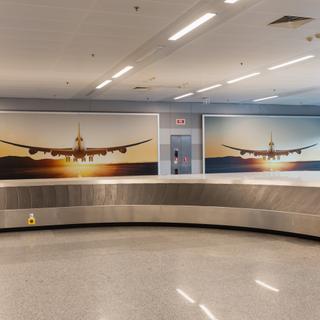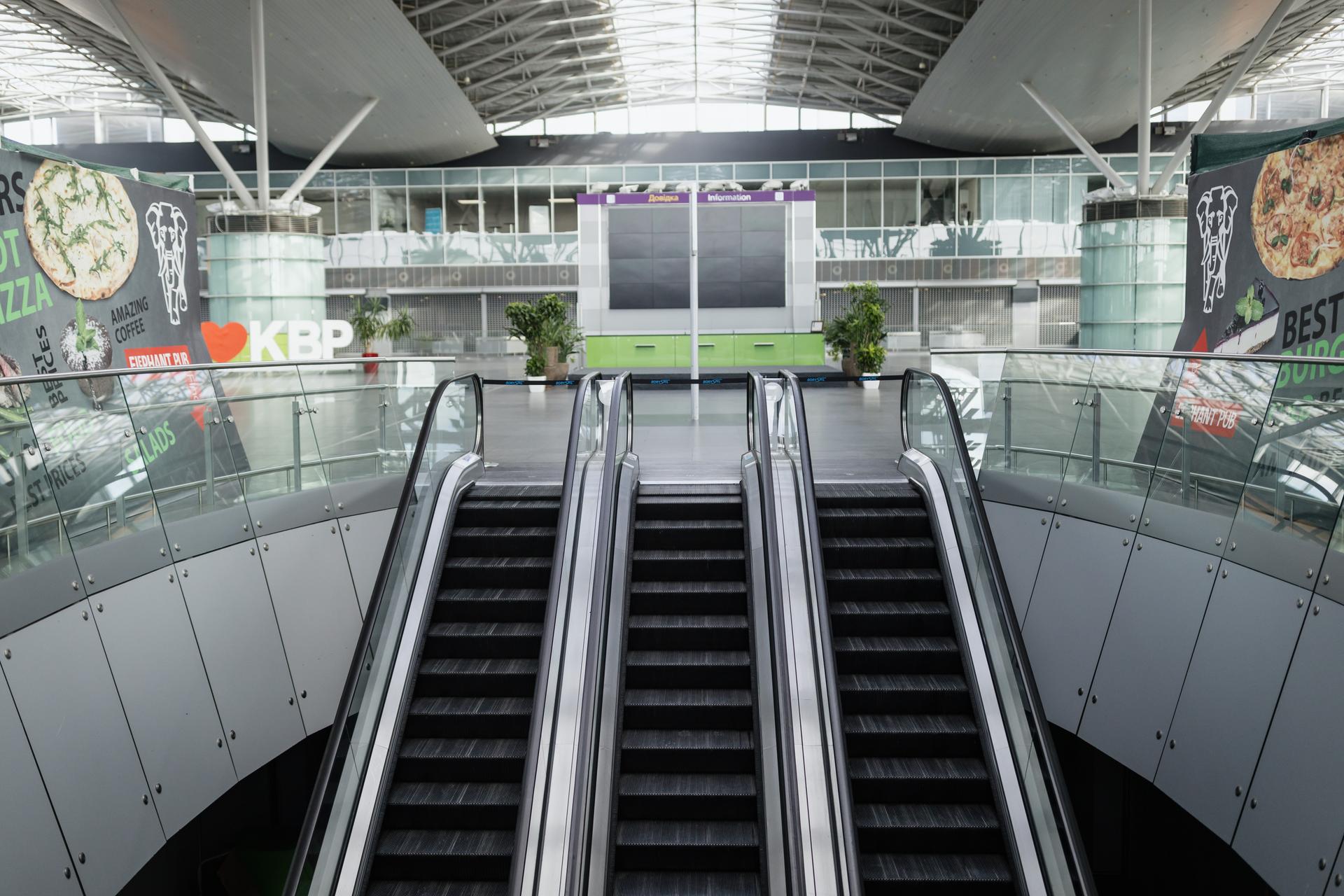


Kyiv airport, in survival mode, banks on resumption of civilian flights despite war
FeatureFor the past two and a half years, aircraft have been grounded and many airports have been destroyed in Ukraine. Kyiv Boryspil Airport, the country's largest, has kept its staff despite being shut down and hopes to avoid permanent closure.
The first thing that strikes you is the silence. Beyond the sandbagged entrance, not a sound comes out of the check-in counters, the wide hallways leading to the boarding gates, the duty-free stores or the runways. For two and a half years, Kyiv Boryspil Airport, Ukraine's largest, has been at a standstill, empty and silent. Oleksiy Dubrevskyy, the airport's director general, sometimes feels like he's been thrust into a science-fiction universe. "It's like being in that Stephen King short story The Langoliers," he said as he strolled through the airport, as deserted as the one haunted by monstrous creatures imagined by the American writer in his 1990 story.
In Kyiv, as in the rest of the country, the Russian invasion in February 2022 brought civil aviation to a halt. All flights were suspended the moment the first missiles hit Ukraine. Even today, no aircraft other than military ones fly over Ukraine. Ten of the 13 airports in operation before the large-scale offensive are now partially damaged or completely destroyed, including those of Zaporizhzhia, Kherson, Mykolaiv and Hostomel. Only three were spared or lightly damaged: those of Lviv, Odesa and Kyiv Boryspil, itself hit by rockets in February and March 2022. "Unfortunately, the sector has suffered a lot," saidDubrevskyy. "We've gone from a growth to a survival strategy."

In 2021, 16.2 million passengers flew across Ukraine, including 9.5 million to state-owned Kyiv Boryspil Airport alone. Forecasts for 2022 predicted an increase in traffic, before the Russian offensive dashed these hopes. "We're the only sector not to be operational 32 months after the start of the invasion; all the others have taken steps to remain operational despite the war," lamented Dubrevskyy.
'Ready when business starts up again!'
Despite the lack of any prospect of a recovery, the director chose not to cut staff numbers in order to preserve the skills of his often highly qualified workforce and to maintain the airport, an immense infrastructure spanning 1,000 hectares and made up of over 220 facilities. It still employs 3,300 people, compared with 4,015 before 2022 – some of whom have fled abroad or resigned. Now receiving two-thirds of their salary, they rotate to keep 650 to 750 employees on site every day. "This airport is like a small town," explained Dubrevskyy. "So, even if there are no more flights, we can't just close it down while we wait for the war to end; we have to maintain it so that we're ready the day business starts up again."
You have 63.04% of this article left to read. The rest is for subscribers only.
